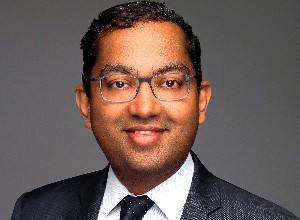T Rowe Price impact fund favours engagement over exclusion
T Rowe-Price fund manager Hari Balkrishna has been discussing the equities carnage of 2022 and prospects for the future.
Monday, May 15th 2023, 8:48AM
by Andrea Malcolm

“If we can find companies that compound at 10 to 15% there’s still a lot of money to be made in equities and impact investing is that area," he tells a room full of financial advisers and others at the Harbour Asset Management Responsible Investment Summit recently held in Wellington.
London-based Balkrishna goes on to outline TRP’s “watertight investing framework” for picking those do-good growth stocks for the TRP Global Equities Impact Fund.
Keen to debunk the notion that impact investing is about charity and doing good only, he says impact funds apply the same investment principles and policies, as any other.
“Even before impact I was attracted to stocks which would nowadays be in impact funds with more people wanting EVs, decarbonisation of buildings, clean energy, recycling of materials and plastic. They have a better top line and broader growth prospects than the index because they’re doing good.”
TRP takes a four pronged approach – materiality, measurability, additionality and resilience – to choosing stocks for its impact fund which must measure for impact as well as financial return. “The approach is very multi dimensional and stock based, using insights from our research platform and company engagements.
“On materiality we need to find stocks where positive impact has at least 50% materiality to their business model. We start with 3000 stocks in a global world index and the 50% materiality requirement takes it down to 400-500 stocks. Every stock is aligned with clearly defined impact pillars, using revenue inclusion criteria, always accounting for dimensions of positive future change. I think they will outperform the broader index.”
TRP uses a mainstream index that will attract capital, he says.
For measurement, a company’s fundamentals are vetted using the Impact Management Projects’ five dimensions of impact framework - who (is impacted), what (is the intended outcome), how much (impact is made), contribution (of the company to that impact) and risk (that the impact isn’t achieved).
“It’s almost like an investment committee,” says Balkrishna. “We build an impact model and report outcomes to customers annually. Companies are monitored through company engagement and analysis.”
‘Additionality’ in the world of impact investing is about helping generate positive outcomes through capital investment and engagement.
“We commit to using our scale and resources to promote and progress the impact agenda.There is a US$5 trillion fund gap to achieve the UNSDGs. I don’t think it will come from private equities.”
Managers for the global equities impact fund will collaborate with other TRP fund managers and asset owners on engagement to drive impact in the large listed equities space.
All engagements have desired deliverables and are recorded and tracked. “If there is truly no movement we divest but the companies we deal with want to make an impact,” Balkrishna says.
TRP favours engagement at scale over exclusions. For example the fund includes the largest industrial gas company Linde which is enabling transitioning through decarbonisation technology. In 2021 it mitigated 88 million metric tonnes for customers leading to a US$50 billion opportunity, says Balkrishna. Revenue is subscription based and stock is up 20%.
“Linde has its own carbon profile so if you looked at ESG data from the likes of Sustainalytics, it wouldn’t have a great score. We need to engage to keep on their mitigation strategy and push them to accelerate towards green hydrogen,” says Balkrishna.
| « Kiwi investment in companies destroying tropical rainforests increases | ASIC touts greenwashing tally, FMA responds » |
Special Offers
Comments from our readers
No comments yet
Sign In to add your comment
| Printable version | Email to a friend |



